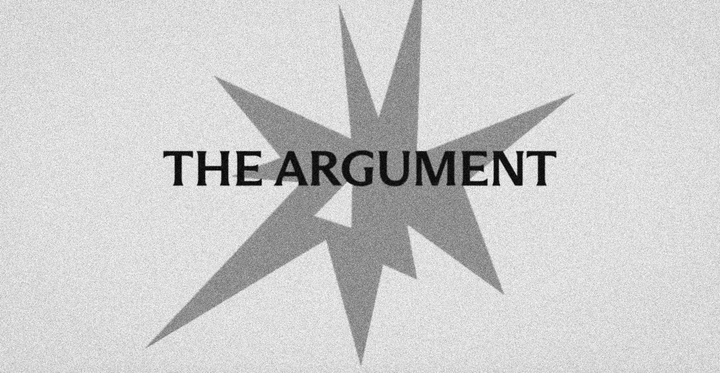The Crisis of Coercion
The crises of the twenty-first century demand conscious public control. But this power is conspicuously absent, on both right and left.

Life has been hard on Luo Yunghao since his tech startup began to flounder in 2017. After “Smartisan” declared bankruptcy, he was hounded by creditors, forced to personally cover his company’s debts, and blacklisted by the state. These actions were followed by complete ostracism—Yunghao could no longer take a train, fly, or otherwise travel outside of China. To crawl out of insolvency, he began hawking his defunct company’s wares on streaming channels, publicly auctioning off old office chairs and smartphones, finally squeaking out of a debtors’ blacklist by 2020.
American reporters at the Financial Times found it hard to suppress their culture shock at the story. “Once blacklisted”, they noted, “it is nearly impossible for individuals to start another business”, while debtors “are also blocked from a range of economic activities.” Given the relative underdevelopment of Chinese bankruptcy law, China’s tech founders are usually personally liable once their company dissolves. Some regional authorities go so far as to seize a founder’s medical insurance fund.
The contrast with the light-handed treatment of tech renegades in Europe and the United States is easily noticed. One can only imagine where the current president of the United States and his DOGE condottiere would be if American bankruptcy law were like its Chinese counterpart. Unlike in China, where Yunghao and his ilk are turned into politico-economic pariahs, in America, the tech sector seems to hover in a world without gravity or interest rates, responsible to no one but themselves.
Yet what makes stories like Yunghao's so alluring is that they reveal what is lacking in many societies: a capacity for public control. This capacity is not simply a function of the authoritarian methods of the Chinese party state—which is more decentralized and haphazard than the Western commentariat is likely to acknowledge. The United States is also quite punitive, imprisoning large parts of its population and policing the world, but it is hard to see how it could now rewrite bankruptcy law in accordance with its Chinese analogue. Where is the difference?
Lacking from Left to Right…
In a century in which humanity faces the most intimidating challenges, from climate change to economic apartheid, the capacity to coordinate a collective response to them, even if autocratically, has never seemed more cruelly absent. The disconnect has only become more glaring in the past five years, as both climate mitigation and industrial development have wriggled their way to the top of many Western policy agendas. Now that twenty-first century states are finally facing up to the challenges presented by the new century, it seems that a crisis different from a purely financial or political one has dawned: a crisis of coercion or command, or an incapacity for agents, be they corporate or individual, to convince other agents to do something.
Examples of this inability are easy to spot across the spectrum. Biden and his supporters tried to motivate American capital to invest in a green transition, but not through the nationalization or requisition of their fortunes—the Inflation Reduction Act was almost all carrots and no sticks. A true green transition would require a state capacity that the current American government lacks, and which Biden never really attempted to mobilize. The situation in Europe is similar: the relevant incentives are simply not compelling companies to engage in the necessary greening.
This crisis of coercion is hardly exclusive to the Center or the Left, however. The past decade has seen the steady rise of a self-proclaimed “post-liberal” Right—even if its pretensions to its post-neoliberalism or post-capitalism are still open to scrutiny. Since 2020, it is now firmly establishing itself as a force of government. Despite its self-important conception, the policy effects of this new tendency on the Right have yet to be borne out. DEI is set for evanescence—yet so far, all the success stories on the coercive Right have been about culture rather than broader social change. The contemporary Right still lacks the means to exert any real pressure to force people to return to church, desire large families, and abandon liberal mores. Since liberal democracies have moved questions about faith and family to the realm of private life, many reject even being asked to bring these questions out into the public.
Orbán’s attempt at pronatalism has failed, as it is clear that Hungarian birth rates will continue to stagnate for the coming decade. Polish conservatives have similarly tried to increase national family formation for a decade; the results have been meager at best. Putin has tried a wide gamut of approaches to increase conscription in his continuing war effort, with everything from financial bribes to the mobilization of peripheral reserve labor, yet his manpower shortage continues. Across the West, migration has now become the master concept through which socially stagnant electorates experience and read the crises they are subject to—the perfect token for a lost sense of collective control.
…and from Top to Bottom
In the 1970s, Jürgen Habermas already diagnosed the particular ill from which many would-be coercers suffer as a “legitimation crisis.” He was hardly aware of the proportions it would take in the age of overlapping emergencies.
In political science textbooks, the most basic definition of power is the capacity for agent A to get agent B to do something that they would otherwise not do. The contemporary crisis holds on both sides of this definition: A’s capacity to implement a decision, and B’s willingness to undergo and suffer through it—the type of consent which ideology-critique usually analyzes. The modern age started with a plea for this type of power to be generalized: Thomas Hobbes’ theorization of the rising absolutist state, seizing the weapons of roaming gangs posing as feudal lords and centralizing the extraction of rent in the hands of a corporate person, followed by Rousseau’s contention that the person in question could also be subject to a popular will.
The power envisioned by Hobbes is today in profound disarray. Freed of any remaining public fetters in the wake of the neoliberal revolution, European and American capital will not tolerate any incursions into their profit rates—let alone their prerogative on investment decisions, still a contentious question in the tumultuous 1970s. This situation forces states to either look for private loans or engage in public-private partnership, guaranteeing profit margins for companies that are prey to hostile markets. The result is what Daniela Gabor has typed “discipline light” solutions to the collective action problems of the new millennium: placating or exhorting private actors who would normally suffer some degree of risk.
While the inability to discipline capital in the 2020s is the most striking expression of the crisis of coercion, the trend is hardly exclusive to the business class. At the bottom of society, it is equally clear that institutions such as states or parties that could once exercise collective pressure have atrophied and find it hard to impose discipline on their members—if the category of “member” is applicable at all.
The most energetic social movements of the preceding decade bore out this fact with uneasy acuity—BLM or Occupy, horizontally modelled, eternally allergic to leadership positions if not for temporary bouts of charisma, unable to crystallize themselves into organizational clusters. These are hardly personal faults of the participants involved, even if the culture of self-expression which today’s activist scene celebrates might not prove helpful in finding remedies for the ailment.
The turbulence of today’s hyperpolitics reflects the increasing volatility of both our working and personal lives, as evidenced in the atomization induced by a service economy reliant on household debt and residential assets, and the fracturing of civil society organizations in what even mainstream writers now term the “anti-social” century. When hyperpolitical social movements seek to change a power differential within society, they lack the capacity for a disciplined assault on the bastions of the wealthy, as they remain constrained by the neoliberal offensive on civil society in the 1980s and 1990s.
The most energetic social movements of the preceding decade bore out this fact with uneasy acuity—BLM or Occupy, horizontally modelled, eternally allergic to leadership positions if not for temporary bouts of charisma, unable to crystallize themselves into organizational clusters.
The Last Remaining Source of Coercion
Yet the tolerance for one specific type of power has not decreased: the impersonal pressure of the market, or the demands of the price system. These are now increasingly experienced as the twenty-first-century equivalent of a pagan Fortuna, as inexorable as the weather, aimlessly steering and determining the course of world history without forcing humans to collectively decide their fate.
One need not see a grand ideological conspiracy here: the tolerance for market pressure is, as with all cases of ideology, mostly an effect of resignation rather than active gullibility. Market signals are accepted because they indicate a necessary biological survival strategy, not because they are divinely decreed. And politicizing prices always comes with a steep cost and sense of responsibility, let alone a confrontation with class power.
Yet their acceptance is undoubtedly smoothed by one factor: that they represent an impersonal rather than personal face of power.
Precisely in the absence of an agent, this type of coercion makes for less contentious politics. It allows the “diffusion of responsibility,” as Daniel Bell put it, which has always remained the final mark of attraction of market decisions, and which neoliberals already celebrated as one of the price system’s chief virtues in the 1970s. “The nature of a market society is to disperse responsibility”, Bell noted in the stagflationary 1970s, and “have production decisions guided by the multiple demands of the scattered consumer.” Prices command without justifying themselves.
To Hayek, the argument was supremely intuitive. By delegating contentious political questions to impersonal price signals, politicians are allowed to evade facing up to conflicts of interest. Behind the command entailed in a price, there is no identifiable agent; if no agent can be identified, no blame can be appropriately assigned. The tolerance is visible across society, in the ease with which we accept the private stewardship of our communication online, in the increasing inability to think through the question of price controls, in the spread of what Brecht once called “political illiteracy”, or in the incapacity to see the political mediation of the facts of our social world.
The last five years of politics might be the acting out of this contradiction—a society which has lost tolerance for the exercise of public authority, but one that also silently yearns for it to face up to the challenges of the new century. “Daddy has returned and is taking his belt off” was Mel Gibson’s immoderate reaction as Trump re-entered the White House—leaving the credulous yet attentive observer to wonder why exactly the belt had to be involved in the first place.
■
Anton Jäger still thinks the situation is serious but not hopeless.



